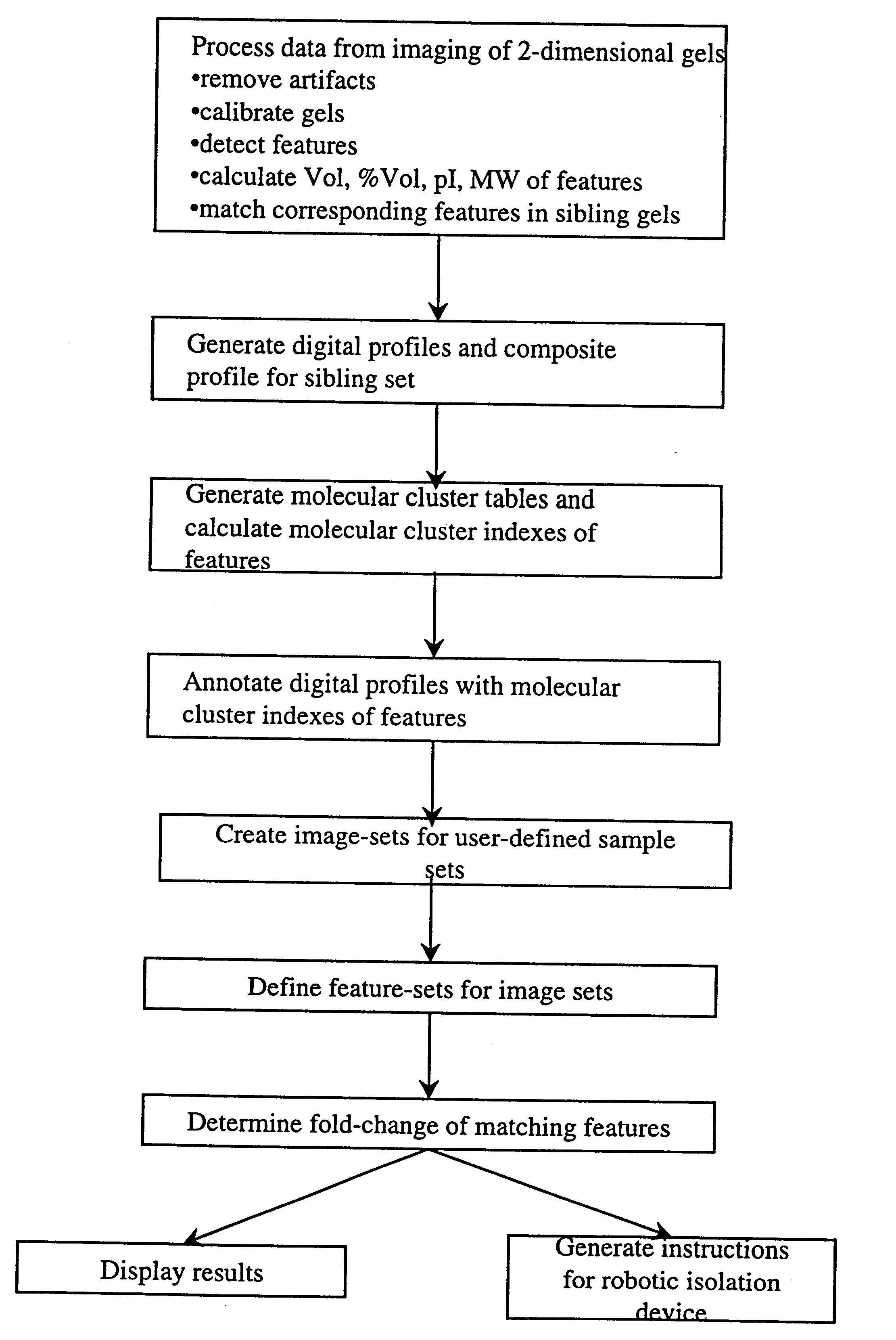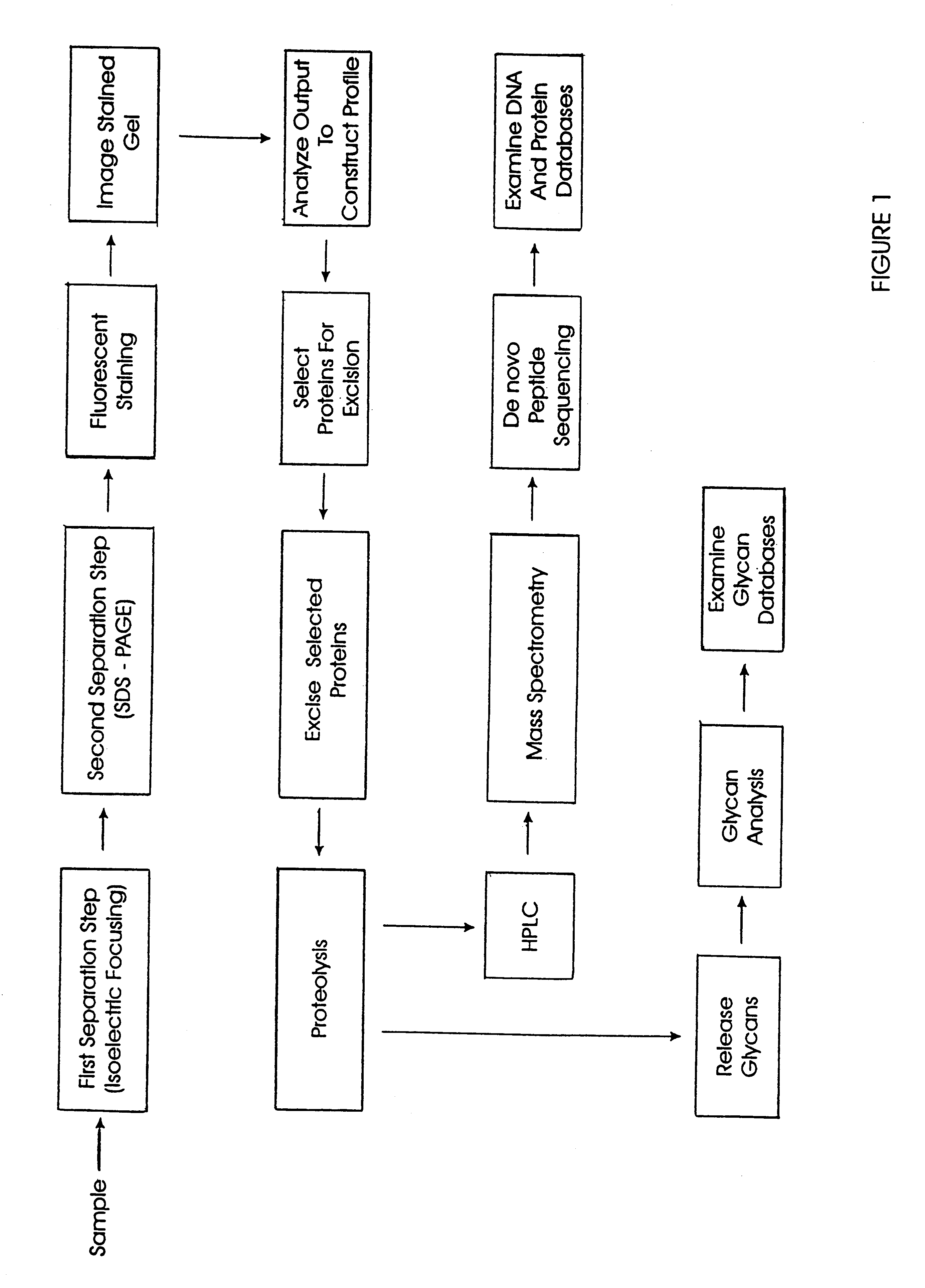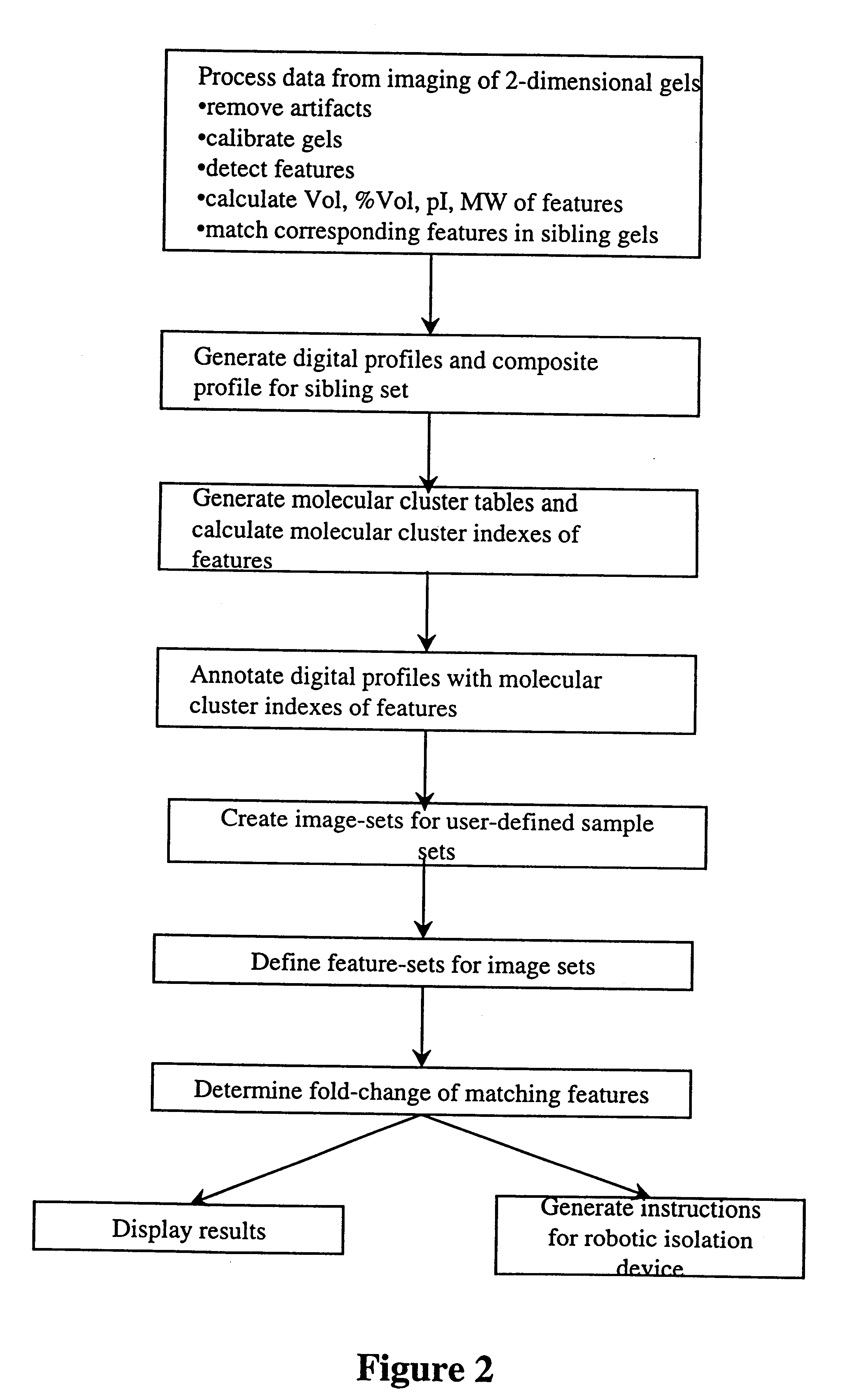Computer-assisted isolation and characterization of proteins
a protein and computer technology, applied in the field of computer assisted isolation and characterization of proteins, can solve the problems of significant limitations, time-consuming and expensive methods of analyzing biomolecules such as proteins, inefficiency in detection, imaging, purification and analysis, etc., and achieve the effect of rapid and efficient identification and rapid and efficient identification of individual biomolecules
- Summary
- Abstract
- Description
- Claims
- Application Information
AI Technical Summary
Benefits of technology
Problems solved by technology
Method used
Image
Examples
Embodiment Construction
The present invention provides methods and apparatus for rapidly and efficiently identifying and characterizing biomolecules, for example proteins, in a biological sample. In one application of the invention, a biological sample is subjected to two successive separation steps. In the first separation step, the biomolecules are separated according to one physical or chemical property so as to generate a one-dimensional array containing the biomolecules; for example, proteins are separated by isoelectric focusing along a first axis. In the second separation step, the biomolecules in this one-dimensional array are separated according to a second physical or chemical characteristic so as to generate a two-dimensional array of separated biomolecules; for example, proteins separated by isoelectric focusing are subjected to SDS-PAGE along a second axis perpendicular to the first axis. The separated biomolecules are stably maintained in the two-dimensional array for subsequent imaging. The ...
PUM
| Property | Measurement | Unit |
|---|---|---|
| temperature | aaaaa | aaaaa |
| temperature | aaaaa | aaaaa |
| temperature | aaaaa | aaaaa |
Abstract
Description
Claims
Application Information
 Login to View More
Login to View More - R&D
- Intellectual Property
- Life Sciences
- Materials
- Tech Scout
- Unparalleled Data Quality
- Higher Quality Content
- 60% Fewer Hallucinations
Browse by: Latest US Patents, China's latest patents, Technical Efficacy Thesaurus, Application Domain, Technology Topic, Popular Technical Reports.
© 2025 PatSnap. All rights reserved.Legal|Privacy policy|Modern Slavery Act Transparency Statement|Sitemap|About US| Contact US: help@patsnap.com



